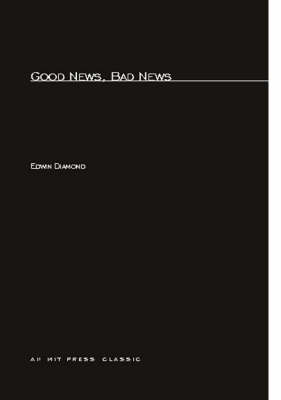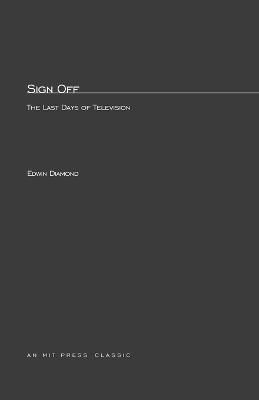The MIT Press
3 total works
Good News, Bad News is one of the few recent works of press criticism in which substance and style are fully in harmony. The reader is neither overwhelmed with raw data nor dazzled by flashy opinions unsupported by documentation: the authority of the research that informs Diamond's opinions is always in evidence. Much of the book is based on material compiled by the News Study Group, in the Political Science Department at MIT.The book's three parts cover the 1976 campaign, changes in television, and changes in print journalism
"For now - the 1980s - television is still in its prime time, and hearing the first intimations of mortality." And what will follow TV? More TV, TV that is different and yet not all that different. In this evocative book, Edwin Diamond points out that what we see on television today closely reflects our culture and society and politics and will continue to do so. Because the country is not changing as fast as the technology, Diamond's study of television in its "prime time" is also a glimpse of much of the content of the TV of the future, whether it comes to us over the air, by cable, or by satellite. Among other topics, Sign Off covers sex on television, the TV preachers of the "electronic church," the way television handled the Iranian hostage crisis, "Full Disclosure" as seen (or not seen) in the media's handling of Nelson Rockefeller s death and Ted Kennedy's reputed "womanizing," "Disco News" and Ted Turner's continuous news, the Three Mile Island reportage, the reign of the young and the white and the male on commercial television, and the twin myths of television's omnipotence and its liberalism. Although today's network-dominated, "free" television with limited channels will be superseded by cable and satellite transmissions with two-way, viewer-responsive features and add-on computer capabilities that will offer, usually for a fee, 60 to 100 channels precisely aimed at special-interest audiences, the content of TV will not be altered so much as the kinds of in-home services available. Edwin Diamond relates television to what is happening in other media, as might be expected from a writer who has spent his professional life working on newspapers and magazines in addition to being a commentator on (and about) television.
He is Senior Lecturer in Political Science at MIT and was recently Associate Editor for the New York Daily News Tonight edition. Diamond was Senior Editor at Newsweek, a contributing editor of New York and Esquire, and a regular commentator on the Washington Post-Newsweek television stations. He is author of The Tin Kazoo and Good News, Bad News, both published in paperback by The MIT Press.


